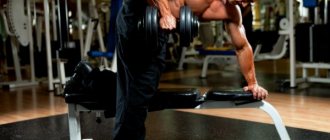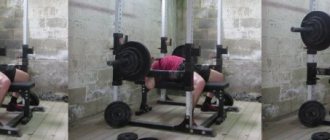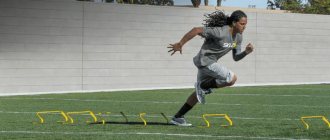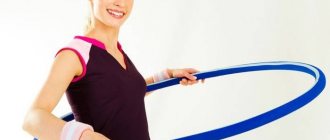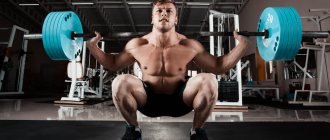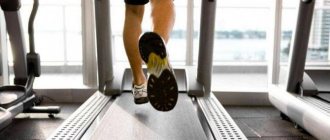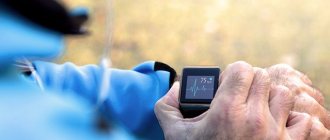Correct technique
The plank is a very effective exercise. He is underestimated by a lot of athletes. In appearance, it is a very easy exercise that is not capable of putting a lot of stress on your body. However, it is not. When performing the exercise, you engage the following muscle groups:
- Rectus and oblique abdominal muscles.
- Serratus muscles.
- Small of the back.
- Lat.
- Legs.
- Deltas.
Technique for performing the plank exercise:
- Take a lying position, as in push-ups.
- From this position, rest your forearms on the floor.
- Keep your back straight, do not lift your buttocks up.
- Look down.
- Your body should be in a straight line.
- Stay in this position until you collapse to the floor.
Now let's figure out exactly how your muscles tense.
For the first 10-20 seconds it seems to you that this is the easiest exercise in your life. Your muscles hardly tense up.
After 30 seconds of standing in a plank, you begin to feel a burning sensation in your lower abs. Your arms begin to tense slightly, it seems that you can’t stand any longer. However, this is not the case. Too often people underestimate their physical capabilities. This is what prevents them from progressing faster in sports.
After 40-50 seconds , you feel your entire abs starting to burn. Before this, only the lower part worked for you, but now the upper part is also included in the work. A slight burning sensation also appears in the lumbar muscles. But this is not the most difficult thing. the deltoids are the most stressed.
After a minute and a half of standing in this position, your lower back and abdominal muscles are burning, your arms are shaking, and you feel like you are about to collapse on the floor. The legs are also actively involved in the work, and such a wave of muscle tension passes throughout the body. After some more time, you can lower yourself to the floor.
Few people who do planks can hold out until their lats start to burn. You feel a burning sensation throughout your body. And then the lats begin to burn. They receive a static load from the very beginning of the exercise. They just need more time to properly load up.
This is the approximate time to complete the exercise for the average person. If a person is naturally weak, then he will not stand for 30 seconds. And if a person constantly trains, and his body is already accustomed to such loads, he begins to feel a burning sensation only after 2-3 minutes of holding the bar.
This was a classic version of the plank. Besides him, there are others:
- Side.
- With legs elevated.
- With arms raised.
- With an outstretched leg or arm.
- Place one hand or foot on the floor.
The side option is designed for high-quality work on the oblique abdominal muscles. Technique for its implementation:
- Place your elbow on one side of your body on the floor.
- Place the outer part of your foot on the same side as well on the floor.
- Your legs and torso should not be bent: your body should also describe a straight line.
- You need to stand in this position until you fall. After which, you can change sides.
Here you can hold out for much less time . This is understandable, because you are supporting only one part of your body, and you are holding the same weight.
The plank with your legs elevated shifts the load slightly. If you place your legs, for example, on a sofa, then the deltoids, as well as the lower part of your abs, will be more actively involved in the load.
As your arms rise, the load correspondingly shifts to the upper part of your abs. Only this version of the plank is lightweight. A novice athlete will be able to hold out for more than three minutes.
When performed with extended arms or legs, you significantly increase the load on your body. This should be done when the classic version of the plank becomes too easy for you. Remember, training should be hard. And only then will you achieve the desired result.
Beginning of work
The wrist heart rate monitor measures your heart rate using LEDs that monitor blood flow in your wrist.
It allows you to obtain heart rate data without using a chest heart rate monitor, both during training and during everyday wear. The following Suunto watches contain a wrist heart rate monitor based on a sensor from Valencell Inc.: Suunto 9, Suunto 9 Baro, Suunto 7, Suunto 5, Suunto 3, Suunto 3 Fitness, Suunto Spartan Sport Wrist HR Baro, Suunto Spartan Trainer Wrist HR, Suunto Spartan Sport Wrist HR. The accuracy of wrist heart rate monitor measurements is affected by a number of factors, as well as individual differences between individuals.
Therefore, wrist heart rate monitor readings should be considered approximate. For more accurate readings, we recommend using a compatible chest heart rate monitor such as the Suunto Smart Sensor.
Benefits of planks for men
Let's start with the fact that the plank develops a very important quality for men - endurance . And this has a direct connection with pumping up your moral and volitional qualities. In other words, endurance is the patience of your muscles. If your muscles can withstand prolonged stress, then you are a resilient person. But for this you must withstand it mentally. This is how willpower develops. Therefore, every man needs to do this exercise.
Many people who have achieved success in business and sports claim that perseverance is a necessary, and often sufficient, condition for success. And in order to constantly persist, willpower is required. It is primarily pumped up when you do the plank.
Doing this exercise regularly will give you powerful and beautiful abs . Besides the fact that it will look great, it will also be very hard. This greatly attracts the attention of girls.
The plank exercise has a powerful anabolic effect on your body. When you do basic exercises in the gym with heavy weights, all the muscles in your body become very tired. This is what stimulates muscle growth. When performing a plank, you also load the entire body, and it has an effect similar to basic exercises. If you are trying to gain muscle mass at home, then under no circumstances neglect this exercise.
If you want to lose weight, then you need to do this exercise. Firstly, accelerating anabolism helps you burn fat faster. Secondly, this exercise strengthens your abdominal muscles and greatly narrows your waist. Thus, by completing the plank, you kill two birds with one stone. By the time you lose fat, you will not just have a flat stomach, but strong abs with a narrow waist.
The plank exercise also has a positive effect on health. This exercise involves all the stabilizing muscles that hold the spine, thereby straightening it. If you perform the plank exercise, you reduce the risk of arthrosis and osteochondrosis. And if you perform this exercise along with hyperextension, then you will never experience sudden pain in your back.
How to do a plank: photo
Exercise frequency
If you are a beginner athlete, then it is not recommended for you to perform the plank more than twice a week. However, you do not need to perform more than one attempt per training day. The bottom line is that you first need to learn the proper technique. Once you learn how to hold the bar, you can gradually increase the frequency of your workouts.
If you regularly work out at home or in the gym, then most likely at the end of each workout you pump up your abdominal muscles. So, the plank is a great option for completing your abdominal workout . After you have pumped blood into your abdominal muscles, it’s time to give them a static load. This will increase the effectiveness of your training.
If doctors have diagnosed you with back problems and recommended doing planks, the optimal training frequency for you is 3-4 times a week. No more, because you can only make your situation worse.
For many athletes, strong corset muscles are not the goal. They are more attracted to the time they are able to stand in the plank. Such training pumps up your moral and volitional qualities. This approach to business is very good. As a result, you will achieve your goal and gain iron willpower. And sculpted abs and a complete absence of spinal problems will be a bonus for you.
Rules for measuring pulse
To obtain accurate information about the heart rate, you need to avoid the influence of factors that increase or decrease the rate. The procedure should not be performed if:
- the person is emotionally overexcited;
- took a hot bath before or after swimming in the pool;
- immediately after sports, increased physical activity;
- a large amount of food was consumed or the person did not eat for a long time.
Under the influence of these factors, the frequency of contractions changes, and the result obtained will not be accurate.
It is also important to remember that your heart rate slows down before going to bed and after waking up. Therefore, it is better to measure your pulse a few hours after sleep. It is advisable to do this in the morning, while in a horizontal position, since sitting and standing the results will be completely different.
The patient should be comfortable emotionally and physically. The heart rate changes all the time.
Therefore, reliable information about the functioning of the cardiovascular system can be obtained by measuring your pulse every day at the same time during the week.
Contraindications
There are some diagnoses for which it is strictly forbidden to perform this exercise:
- Intervertebral hernia. With such a disease, this exercise will only make it worse for you.
- Severe injuries to the spine and shoulders, in which static load is unacceptable. Such diagnoses are made by a doctor. Whether he will allow you to do the plank or not depends on the severity of your injury.
- Diseases of internal organs. There are some diseases that require you to completely eliminate physical activity from your life. This also applies to the plank exercise.
- Pregnancy. In this position, the bar will harm your child. By the way, the plank is an excellent exercise for recovery after childbirth. However, this exercise should be done with caution.
Common mistakes
Each exercise has its own subtleties and nuances of implementation. Many athletes do not take them into account and make the following mistakes:
- Arching the back . This is not worth doing, as your stomach will begin to sag downwards. With this option, the load is distributed unevenly, and this harms your spine.
- Dropping the hips and raising the buttocks too high . Above, the body should describe a straight line. This is what ensures maximum tension in all the muscles of your body.
- Rotation of the head while holding the plank is unacceptable . When you do this exercise, your spine is under tremendous tension. If you haven't warmed up well, any head turns can injure your cervical vertebrae.
The key to a successful workout
The main condition for success in any training is increasing the load. When you can do a plank with proper form and you get bored, you need to add extra weight. For example, put a dumbbell disc on your back.
The training process should bring you pleasure and interest, not boredom. Therefore, perform different variations of the plank, for example, with an extended leg. A varied workout routine brings much more benefits to your body.
To know what to strive for, use the table with the training program. It can be downloaded on the Internet. It says how you need to increase the time you hold the plank over the course of a month. A very useful thing.
Do the plank correctly. The correct technique for performing the exercise is what decides everything here. If you easily stood for 5 minutes, don’t flatter yourself. Perhaps you are simply not doing this exercise quite correctly. Check everything carefully, because if you perform the exercise correctly, then you can be congratulated: you are the happy owner of strong corset muscles!
Troubleshooting Tips:
Update your device software
To ensure your wrist heart rate monitor works as efficiently as possible, it is important to keep your watch software up to date. We are constantly improving the software of our products, working on their efficiency and eliminating shortcomings discovered during field tests. Learn more about software updates for your device and how to install software on your watch.
Wrist heart rate data not saved
For everyday use: If the heart rate monitor fails (not detecting and/or reading your heart rate), and if the heart rate monitor LEDs on the back of the watch are not blinking (the heart rate monitor may not be working or is disabled), check that the Daily HR function per day) included. Go to Settings > Activity > Daily HR and make sure the switch is green. This means that continuous heart rate measurement is enabled throughout the day.
During exercise: If your wrist heart rate monitor is not functioning before you start exercising, make sure your watch is not paired with a belt heart rate monitor. Go to Settings > Connectivity > Paired devices . If your heart rate monitor is listed, press the middle button and select Forget.
If these tips don't solve the problem, if your watch isn't reading your heart rate, or if you're experiencing other sensor issues, a soft reset may solve your problems. Find out how to reset your watch
Heart rate too high or too low at the start of training
If your watch displays the wrong heart rate at the start of your workout, warming up may solve the problem:
- Warm up for yourself: The accuracy of the wrist heart rate monitor is highly dependent on the blood circulation in the arms and hands. A proper warm-up lasting 10-15 minutes improves blood flow and increases the accuracy of heart rate measurement. AND
- Warm-up for the heart rate sensor: The sensor takes time to take a reading of your heart rate (usually this takes a few minutes). To ensure that the sensor has time to enter operating mode, we recommend opening the exercise start screen while preparing for a workout (for example, while changing clothes).
Using a chest heart rate monitor for more accurate readings
For more accurate readings, we recommend using a compatible chest heart rate monitor (such as the Suunto Smart Sensor Belt Heart Rate Monitor). With a chest heart rate monitor, you can clip the watch to your bike handlebars or clothing to easily view your heart rate.
When your watch is paired with a belt heart rate monitor, a small belt appears in the heart rate icon located on the exercise start screen. When using the wrist heart rate monitor, the icon is shaped like a heart.
